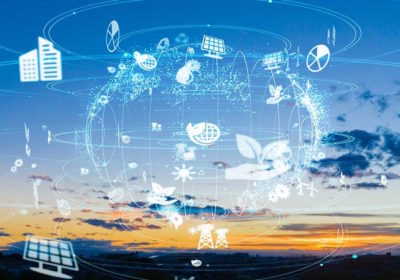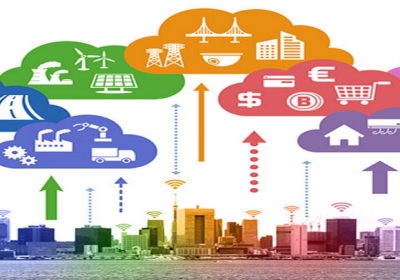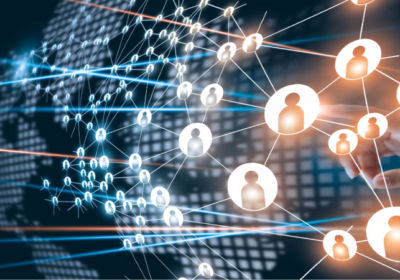
In the so-called “fourth power”, the media, an enormous revolution is taking place due to the irruption, for several years now, of “individual” journalism, in which every human being with a cell phone can act as a correspondent of whatever is going on around him or her. If a few decades ago only accredited journalists and official media were the ones who could take as valid what was “happening in the world”, this is no longer true, since every person with a blog, a YouTube channel or a Facebook account can start uploading to their network the news of their city, their area of residence, what they see on their travels or what they think is happening here or there.
The thousand faces of the news
The contradiction between “citizen” information and “official” information is sometimes tremendous. Different media try to contrast data, not always, but in general they do it, before publishing that something is “so” or that “this” is happening. Citizen journalism takes a cell phone, records an event and uploads it to the network, giving his personal interpretation to the person who has been on the scene as he has seen, understood and decoded it. The biased vision of the media that follow partisan norms or political currents is not within the vision of the person on the street who only reports what is happening in front of his eyes, but also does not try to distort the information or give it an interpretation according to the editorial line of his company, since he does not have, in general, any reason to do so.
While the big news chains, media and press agencies are controlled by a few multinationals with a lot of power to set the basis of what the public opinion knows or does not know; when it comes to “urban” journalism or news that comes directly from citizens, through social networks or videos recorded “in situ”, control is non-existent and, therefore, there is a huge fight against this type of “informers” who already sneak into the front pages of some news programs because they have accessed information spontaneously or by chance, where no television channel has been able to be at the moment when something was happening.
Information that does not harm them
The self-criticism and sometimes self-censorship that many newspapers and media also do about what they publish and how they publish it, so as not to harm the political or economic interests of the companies to which they belong, is not present in the spontaneous and sometimes anonymous dissemination of the facts that are reported on the networks. This institute, the IDHUS, is nourished by a lot of information that does not pass through any official media, but through a network of individuals in very different social and professional positions who have direct access to scenarios and knowledge through which to “see reality” without responding to editorial lines or responsibilities to political or business systems. This type of informative line, is leading to an increasing interest in following independent journalists, or YouTube channels where simply someone expert in some subject, is generating reading or audiovisual material in their field of work that does not go through the filters or adaptations that other colleagues must abide by to meet the standards of their newspaper or television channel.
Information through colored lenses
It cannot be avoided that the information that reaches the citizenry is completely biased, since the struggle for control of what is wanted to be known or not is enormous in large corporations and political systems in all countries. The media is used, and it is not news or anything new that we are discovering to the world, to program the population with a series of ideas about other actors in society in other parts of the world, polarizing the population against each other.
What is explained on the Russian RT is contradicted by what is explained on the American CNN, the British BBC or the French France24. What is told on Chinese CCTV gives a different view of the world than what is explained by Al-Jazeera from Qatar, and, therefore, depending on what part of the planet you are in and what media you follow, your view of reality will have a different color and sifting than the view of reality of another person in a different country.
Since we do not have the time or capacity to absorb and follow the different points of view on the same event, and since a large part of the population does not have the linguistic capacity to know the broadcast language of other channels, even though English is generally used to reach an international audience in all of them, most of us are limited to listening to news in our local language, coming from our local or national media, and associated with the lines of political and social thought that we have.
Since we remain firm and loyal to this type of media, those who listen to a “right-wing” radio station become more and more polarized towards the right, those who read a “left-wing” newspaper become more and more entrenched in their system and vision of the world, preventing a comparison of data and information that would lead us to mix the two or five versions of a fact or situation, and, then, create our own version of it without falling into the blind acceptance of the vision that the newspaper or media is trying to transmit to us.
The constant saturation of information to which we are subjected, and the need to maintain its screen share, its number of readers or the percentage of the audience, forces the media to radicalize or focus more on its own niche of readers by delving into what differentiates it from the niche of the newspaper next door.
All news comes from the same source
This forces us to be creative when it comes to reporting the news, especially because the news comes from a few international agencies with a lot of power and great deployment all over the world, which are the ones that collect and prepare for the media what they then publish. Therefore, the news agency may already have its own vision of reality. Then, by selling the information to multiple channels of different political and social tendencies, they are delivering the same product to media outlets that then have to adapt it to their audiences, having no choice but to change some data, focus the wording in a certain way, omit some detail or increase some aspect that the other channel reduces or changes for the same reason.
Knowing this, it would be interesting, for example, to obtain information directly from the web pages of international news agencies that are one link above the news production chain, but this is not easy either, since the communication market is opaque in certain aspects and we do not always have access to the information and documentation that the agencies generate and then sell them to the media. Moreover, since the two or three most important agencies on the planet answer to large business groups of different political ideology, the news is also biased and sifted according to the guidelines of these groups and companies, so that, even climbing the ladder of information production, almost all of them are adapted to how and in what way the final consumer wants to receive and process them.
Several angles to understand a fact
The only solution, as we had mentioned, is to be able to follow several media outlets that have opposing interests, so that we can see the two or three sides and interpretations of some fact or event we are interested in, in addition to following journalists and independent sites that act just for the sake of sharing something without a business and political environment in between. Then, having these different sources to inform us, it is a matter of carrying out an individual intellectual process to discern the “truth” of something based on the analysis of its different versions, something neither easy nor trivial, and something that few human beings have the time, desire and energy to carry out.
As long as this continues to work in this way, public opinion continues to be very poorly informed, since there are few traces of objective facts in what is delivered to it, no matter how much it is the slogan of any media to make us believe that they do not really sift or color what we then consume. As we continue to be “misinformed”, we will have fewer opportunities to detect manipulations and attempts to convince people that something is true in a certain way that suits the powers that be at the time.
Every time an election approaches, we see this mechanism at work in full force in every media outlet in every country on the planet. Every time a political or economic change is approaching or a social response to a certain issue is desired, all the communicative processes and networks are activated. Whenever there is a desire to consider something as good when yesterday it was bad, or to try to influence public opinion to reject something that it embraced with fervor the day before yesterday, the media has the capacity to achieve it.
And, as a colleague of this institute once told us because of his involvement in the audiovisual sector, there are offices in the media in which the slogan is simply: “let us do it, we will win the elections for you”, meaning that, depending on what you want people to believe or not believe about a party, a politician or an electoral program, you just have to put the newspapers in motion and the media to work for it.
Why do we believe everything and why are we so manipulable if we are?
Let us go now to the other side. To the side of the reader who is nourished every day with his or her vision of the world through the midday news and the evening news. If the media act in a certain way, and we are sure that we are not explaining anything that the reader does not know in one way or another, why are we not able to avoid this influence and this manipulation? Is society really so gullible?
We have always heard that those who vote for such and such a party or person who really was so bad and did not fulfill their promises were deceived, or that it is not understood how we can give power to such and such a group or to such and such another who are going to lead us down the road to economic and social disaster, and that they are people who are very easily convinced and can be fooled by any promise.
This is only true up to a point, because we all tend to believe, by education and value system, what comes from certain institutions of “power”, that is, if the media say so and so that are important and credible, it must be true. So there is a component of trusting aspects of the structure of society that are credible to our perception of reality.
But on the other hand, what happens that allows social manipulation is the lack of critical analysis of what is being heard or read. We absorb information from the newspaper, television, radio or internet without any filter other than internal approval if we agree with the news or temporary rejection if it is contrary to our thoughts and ideas. But nothing more. We do not put on paper the reason for what is being explained or told to us, we do not look for the reasons behind the way in which the news is given to us, or we do not analyze, as we have said before, what is the point of view that this particular media is trying to convey to its readers and convince them of it.
Since we, the receivers and consumers of information, are not critical of what is given to us, we soak up the information and let it settle in our minds as if it were an absolute truth, but unconsciously, and from there it is absorbed and adapted to our way of seeing the world and reality and, therefore, we end up convinced of the truth, Therefore, we end up convinced, based on repetition over and over again, in three news programs we watch a day, two internet newspapers we read at work and the radio in the car on the way home and back, that something is really white, even though a week ago it would have been gray.
In this respect, there is a lack of citizen awareness to be able to really estimate the degree of social manipulation that the mass media carry out on information, induced by the economic and political powers to which they belong, no matter how much image of independence they try to show. As long as there is a lack of citizen awareness, it will be easy to circulate all kinds of “fake-news”, all kinds of colored and filtered news, and all kinds of information according to the interests of those who generate them, without special interest in whether what is shared is true or not, as objectively speaking as possible, but simply a consumer product to keep your niche market as loyal as possible and to be able to direct their behavior and way of seeing things at your whim and convenience.



